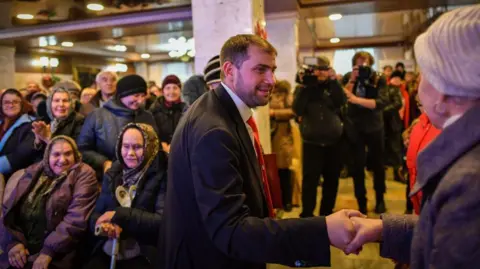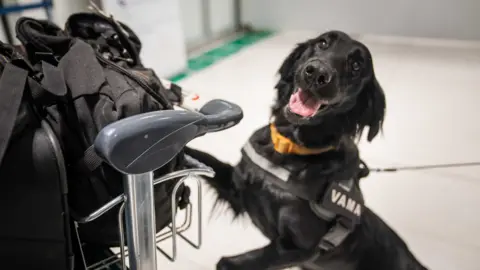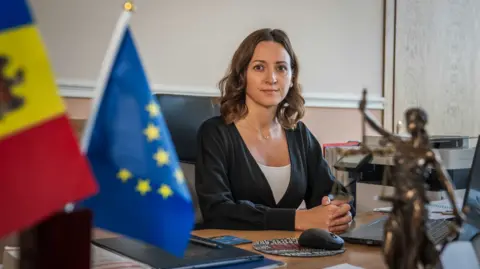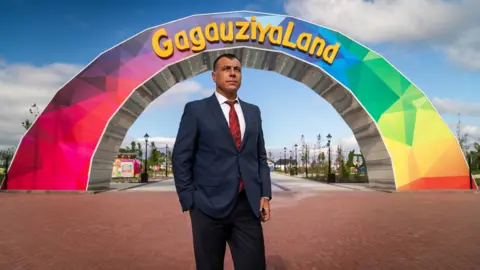A recent report from California’s Employment Development Department highlights a significant growth in employment across the Bay Area, contributing nearly half of California’s overall job growth in September.
According to the San Jose Mercury News, the EDD’s report, published on the 18th, indicates that the Bay Area’s three major metropolitan regions—South Bay, East Bay, and San Francisco-San Mateo—each added jobs in September. Following an increase of 1,400 jobs in August, the Bay Area experienced a substantial gain of 6,700 positions last month.
Steve Levy, director of the California Economic Forecast, expressed optimism about these employment numbers, noting that lower interest rates and easing inflation could foster positive economic developments in the future.
The job growth in September for the Bay Area stands in stark contrast to the slight increases observed during the summer months. The California Labor Department’s report noted that the San Francisco-San Mateo region gained 2,800 jobs, the East Bay added 2,500 positions, and the South Bay saw an increase of 200 jobs.
State officials announced that California added a total of 14,700 jobs in September, with the Bay Area accounting for nearly half of that figure. This job growth is significantly below the average of 22,100 jobs created over the course of the year up until September.
Michael Bernick, an employment attorney with the Duane Morris law firm and former director of the EDD, pointed out that California’s employment growth figures have been declining for the past four months, indicating a sluggish trend. He noted that the Bay Area’s job opportunities in September represented nearly 46% of all new jobs created in California.
Russell Hancock, president of Joint Venture Silicon Valley, based in San Jose, emphasized that while the Bay Area remains stable with a long-term trajectory of continuous growth, it is still experiencing layoffs in the tech sector.
The statewide unemployment rate has remained steady at 5.3%. Since hitting a historic low of 3.8% in August 2022, California’s unemployment rate has been on the rise.
Jeff Bellisario, executive director of the Bay Area Economic Institute, cautioned that despite the increase in job opportunities, the region is not yet in a robust position. He stated that meaningful employment growth over several months is needed to confidently believe in a return to a growth trajectory.
When comparing the current job landscape with the pre-pandemic situation, the Bay Area has 51,300 fewer jobs than it did in February 2020.
Specifically, the East Bay saw a gain of 3,700 jobs, while the South Bay experienced a decline of 6,000 positions. The San Francisco-San Mateo region remains the most affected, with a job deficit of 46,000 opportunities.
Bellisario believes that there is still a significant gap to close in the Bay Area’s post-pandemic recovery. Other experts suggest that the region will need more time to address the challenges of uneven economic growth, noting that despite the advances in artificial intelligence technology, it remains uncertain whether AI companies will generate a substantial number of jobs.
 Ravneet GillFri 11 Oct 2024 10.00 EDTLast modified on Fri 11 Oct 2024 10.21 EDTShareI first tried these biscuits at Selin Kiazim’s bakery in Fitzrovia, which has unfortunately since closed. Her baked goods were truly one of a kind, and these biscuits – slightly flat, crisp and filled with silky chocolate – became quite popular. This version is quite different to traditional izmir bomba; I wanted a dough that was easy to work with, quick to put together, and with a homemade filling. You need to be quick when wrapping the chocolate inside the pastry, though, but if a little seeps out, that’s OK; they’re meant to be rustic.
Ravneet GillFri 11 Oct 2024 10.00 EDTLast modified on Fri 11 Oct 2024 10.21 EDTShareI first tried these biscuits at Selin Kiazim’s bakery in Fitzrovia, which has unfortunately since closed. Her baked goods were truly one of a kind, and these biscuits – slightly flat, crisp and filled with silky chocolate – became quite popular. This version is quite different to traditional izmir bomba; I wanted a dough that was easy to work with, quick to put together, and with a homemade filling. You need to be quick when wrapping the chocolate inside the pastry, though, but if a little seeps out, that’s OK; they’re meant to be rustic. Try this recipe and many more on the new Feast app: scan or click here for your free trial.Take one dough ball and press it flat in the palm of your hand. Put a frozen chocolate ball in the middle and quickly bring the edges up and over to seal. Carefully fold the dough around the chocolate balls, sealing them well and making sure there are no holes or gaps. Once sealed, use your palms gently to press the dough into a thick disc. Repeat with the remaining dough and chocolate balls.
Try this recipe and many more on the new Feast app: scan or click here for your free trial.Take one dough ball and press it flat in the palm of your hand. Put a frozen chocolate ball in the middle and quickly bring the edges up and over to seal. Carefully fold the dough around the chocolate balls, sealing them well and making sure there are no holes or gaps. Once sealed, use your palms gently to press the dough into a thick disc. Repeat with the remaining dough and chocolate balls.
 Getty ImagesIlan Shor – pictured here while running for election in 2019 – fled the country before being sentenced in absentia for money laundering and embezzlementThe sniffer dogs at Chisinau Airport have been working extra hard in recent months, searching for money that might be evidence of Russian meddling in Moldovan politics.
Getty ImagesIlan Shor – pictured here while running for election in 2019 – fled the country before being sentenced in absentia for money laundering and embezzlementThe sniffer dogs at Chisinau Airport have been working extra hard in recent months, searching for money that might be evidence of Russian meddling in Moldovan politics. Matthew GoddardAmi at work in Chisinau AirportSo police and prosecutors began seizing the cash. In one day alone they say they scooped $1.5m (£1.2m). No-one ever asked for their money back.
Matthew GoddardAmi at work in Chisinau AirportSo police and prosecutors began seizing the cash. In one day alone they say they scooped $1.5m (£1.2m). No-one ever asked for their money back. Matthew GoddardPresident Maia Sandu (right) is running for re-election“I’m not aware of anywhere else where we’ve seen such a brazen and open attempt to corrupt an election,” Moldova’s chief anti-corruption prosecutor, Veronica Dragalin, told me this week in her office in Chisinau.
Matthew GoddardPresident Maia Sandu (right) is running for re-election“I’m not aware of anywhere else where we’ve seen such a brazen and open attempt to corrupt an election,” Moldova’s chief anti-corruption prosecutor, Veronica Dragalin, told me this week in her office in Chisinau. Matthew GoddardMoldova’s chief anti-corruption prosecutor Veronica DragalinMoldovan investigators admit they cannot identify the source of funds paid into PSB bank – whether it is Russian state money, private capital or the cash Ilan Shor was convicted of stealing in Moldova.
Matthew GoddardMoldova’s chief anti-corruption prosecutor Veronica DragalinMoldovan investigators admit they cannot identify the source of funds paid into PSB bank – whether it is Russian state money, private capital or the cash Ilan Shor was convicted of stealing in Moldova. Matthew GoddardDeputy governor of Gagauzia spoke openly of his scorn for the EUIlya Uzun is one big fan.
Matthew GoddardDeputy governor of Gagauzia spoke openly of his scorn for the EUIlya Uzun is one big fan. Matthew GoddardA sign for the pro-Russian Victory party in Comrat, GagauziaPro-Russian views and Kremlin-led narratives have always been strong in Gagauzia, where many still watch Russian state TV channels despite a national ban.
Matthew GoddardA sign for the pro-Russian Victory party in Comrat, GagauziaPro-Russian views and Kremlin-led narratives have always been strong in Gagauzia, where many still watch Russian state TV channels despite a national ban. The anti-corruption prosecutor later clarifies that using donations for social spending is not a crime. But channelling Shor’s funds to political parties is an offence – and Uzun’s boss, regional governor Evghenia Gutul, has been charged with that.
The anti-corruption prosecutor later clarifies that using donations for social spending is not a crime. But channelling Shor’s funds to political parties is an offence – and Uzun’s boss, regional governor Evghenia Gutul, has been charged with that. Matthew GoddardGagauziyaland, a children's playground, was almost deserted during our visit
Matthew GoddardGagauziyaland, a children's playground, was almost deserted during our visit EPAWomen in traditional Moldovan dress welcomed President Maia Sandu at a campaign event on FridayOn Friday, Moldova’s election campaign reached its climax.
EPAWomen in traditional Moldovan dress welcomed President Maia Sandu at a campaign event on FridayOn Friday, Moldova’s election campaign reached its climax. Andrew ClementsThu 10 Oct 2024 11.46 EDTLast modified on Thu 10 Oct 2024 11.48 EDTShareAt first sight it seems odd to package Igor Levit’s glossy performances of the two Brahms piano concertos, with Christian Thielemann and the Vienna Philharmonic, with his exceptional disc of the four sets of late piano pieces. For while the concertos belong to separate phases of Brahms’s career – the D minor First was finished in 1858 and the Second, in B flat, 23 years later – the solo pieces belong to another musical world altogether. Dating from 1892 and 1893, those collections of intermezzi, capriccios and rhapsodies contain some of his most beautiful and introspective music. They are unlike anything else in the 19th-century piano repertoire.
Andrew ClementsThu 10 Oct 2024 11.46 EDTLast modified on Thu 10 Oct 2024 11.48 EDTShareAt first sight it seems odd to package Igor Levit’s glossy performances of the two Brahms piano concertos, with Christian Thielemann and the Vienna Philharmonic, with his exceptional disc of the four sets of late piano pieces. For while the concertos belong to separate phases of Brahms’s career – the D minor First was finished in 1858 and the Second, in B flat, 23 years later – the solo pieces belong to another musical world altogether. Dating from 1892 and 1893, those collections of intermezzi, capriccios and rhapsodies contain some of his most beautiful and introspective music. They are unlike anything else in the 19th-century piano repertoire. View image in fullscreenCover art for Igor Levit’s Brahms releaseLevit’s utterly compelling accounts of the late sets are the more impressive element in this collection. He does not put a foot wrong in any of them; each piece is perfectly shaped, its subtly varied emotional charge instantly identified. It’s hard to think of many better recordings of these 20 gems, and certainly not of all four opus numbers together.
View image in fullscreenCover art for Igor Levit’s Brahms releaseLevit’s utterly compelling accounts of the late sets are the more impressive element in this collection. He does not put a foot wrong in any of them; each piece is perfectly shaped, its subtly varied emotional charge instantly identified. It’s hard to think of many better recordings of these 20 gems, and certainly not of all four opus numbers together.